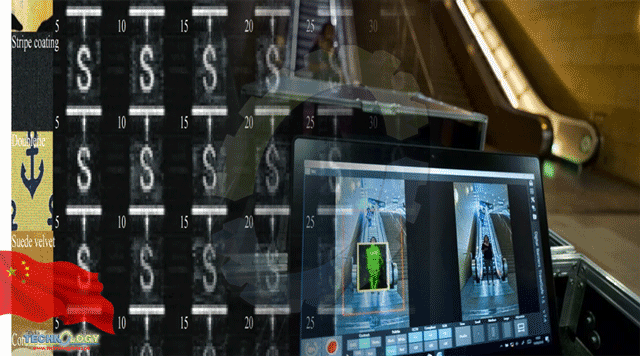The device’s ultra-high resolution is achieved by combining many small antennas instead of using one large one. It could find applications at airports and borders, where China is already using high-resolution body scanner.

A full-body scanner developed using space radar technology has been tested in China and produced unusually clear images through clothes, scientists say.
Its ultra-high resolution could help to identify concealed items with greater accuracy at security checkpoints, according to the researchers.
Tests of the tech suggested that, if used close to a person, it could see a logo on their underwear even if they were wearing a coat.
A team led by Professor Liu Jinsong at Huazhong University of Science and Technology in Wuhan put a piece of paper printed with a thumb-sized letter “S” under five types of common garments, made from a range of natural and synthetic fabrics.
The scanner produced crystal-clear images of the “S” for all of them – something existing scanners lack the resolution to do. It blurred as the researchers increased the number of layers, but remained identifiable through up to 30.
With millimetre-level resolution, the scanner could “easily detect forbidden items such as weapons hidden under clothes”, Liu’s team said in a paper published on Monday in domestic peer-reviewed journal Optics and Optoelectronic Technology.
Some high-resolution body scanners have already been used at China’s airports and border checkpoints, according to state media.
A security officer at Beijing Capital International Airport told Beijing Daily in September that the domestically developed devices now being used produced more detailed images than staff had ever seen.
They use a detection system controlled by artificial intelligence to alert them to any object hidden under clothing.
The scans display on a screen any objects located on a person’s body, but with the body itself replaced by an outline “to avoid embarrassment”, according to the Beijing Daily report.
However, whereas that scanning equipment fills an entire room, making it difficult to install in some instances, Liu’s scanner is about the size of a dress mirror and uses 32 small antennas.
“For a traditional radar, the higher the resolution, the bigger the antenna. This is impractical in some situations,” Liu and his colleagues said in the paper.
Many modern military platforms, including satellites, fighter jets and warships, have used a technology known as synthetic aperture to reduce the size of their antennas, by merging signals of smaller antennas to make a picture of higher resolution.
A satellite equipped with the latest synthetic aperture radar can see bricks on a pavement at night or in bad weather.
Liu and colleagues said that they had modified existing technology to achieve their results without it being harmful to the human body.
Their ultra-sharp images, however, were reliant on a person standing close to the body scanner, and it was unclear whether the equipment would be tested in an airport. Liu could not be reached for comment.
Full-body scanners were introduced in some large airports in the United States about a decade ago. They could detect non-metallic substances such as plastic and powder even when they were concealed in a body cavity.
There were reports of security staff laughing at passengers’ bodies, but the images’ resolution was usually low and sometimes confused a person’s sex.
Some celebrities, such as American country music singer Miranda Lambert, refused to be scanned, opting for a pat-down instead.
A customs official working in a major airport in southern China said that images collected by a full-body scanner were stored in a hard drive for a certain period and linked to a passenger’s name and other personal information.
Protecting this data was important for airport management, because a leak could “turn into a public-relations nightmare”, said the official, who requested not to be named because of the sensitivity of the issue.
Source: The South China Morning Post
